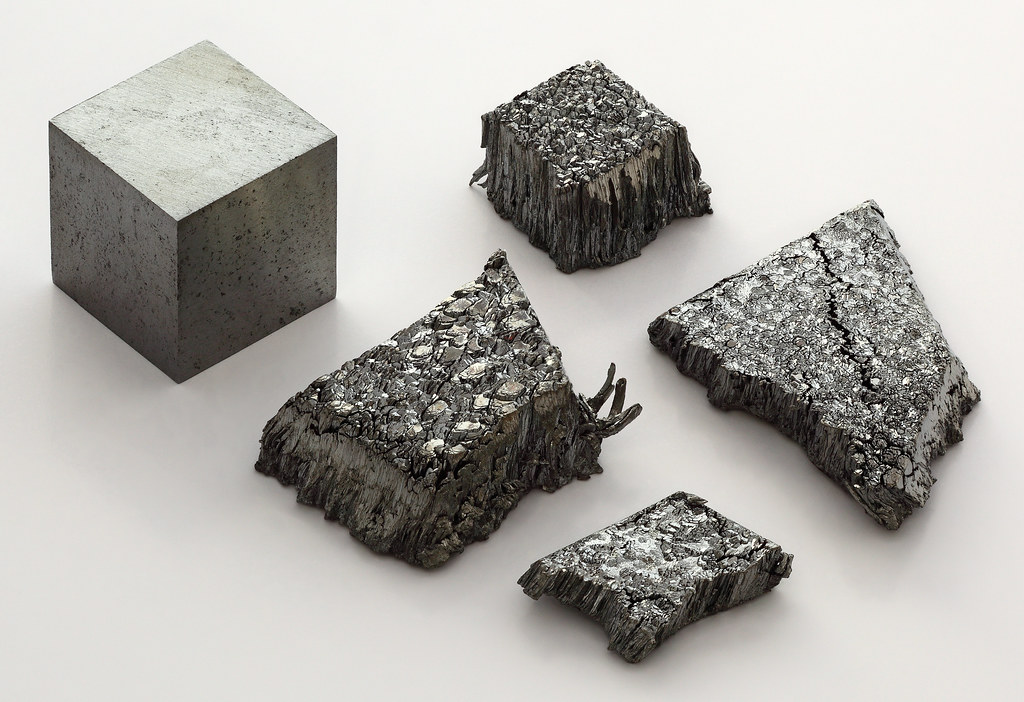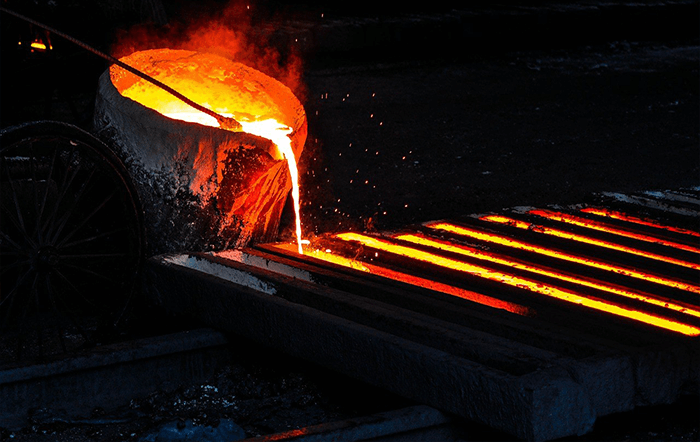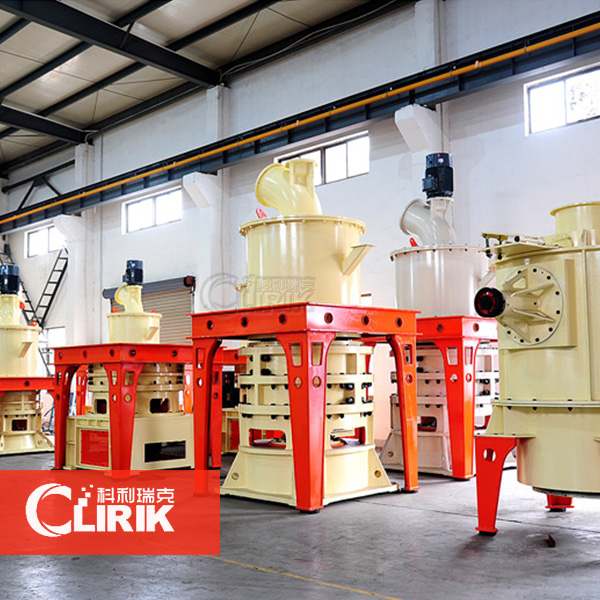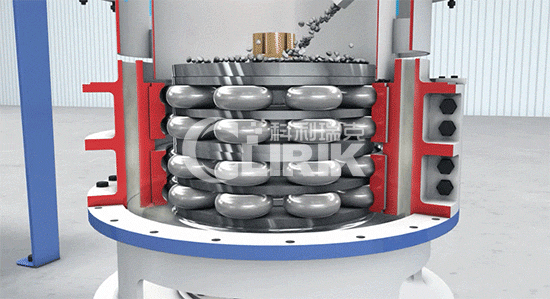
 The Rare Earth and Grinding Mill Play Important Roles" title="The Rare Earth and Grinding Mill Play Important Roles-Raymond mill, Raymond roller mill can be used in more than 300 kinds of minerals powder grinding, Shanghai Clirik YGM Raymond Mill" >
The Rare Earth and Grinding Mill Play Important Roles" title="The Rare Earth and Grinding Mill Play Important Roles-Raymond mill, Raymond roller mill can be used in more than 300 kinds of minerals powder grinding, Shanghai Clirik YGM Raymond Mill" >Rare earths, also known as Tombarthite, are not soil but rather an important strategic resource and an “industrial vitamin”. They represent a treasure trove of high-tech and functional materials for the 21st century. These minerals are often found in single mineral forms such as cerium fluoride and monazite, which possess magnetic and optical properties that can enhance the efficiency of electronic devices.
Rare earth elements, also known as lanthanides, are a group of 17 metallic elements including lanthanum (La), cerium (Ce), praseodymium (Pr), neodymium (Nd), samarium (Sm), europium (Eu), gadolinium (Gd), terbium (Tb), dysprosium (Dy), holmium (Ho), erbium(Er) , thulium(Tm) , ytterbium(Yb) , lutetium(Lu) and yttrium(Y).
The utilization of rare earth elements is mainly observed in military, metallurgy, petrochemicals, glass ceramics, new materials and other related fields. Statistical data show that more than 50 percent of the world’s rare earth resources are allocated to military applications and advances in novel materials. Without these indispensable elements, the existence of television screens, computer hard drives, fiber-optic cables, digital cameras and myriad medical imaging devices would be rendered unattainable. In addition, without access to rare earths, mankind will bid farewell to space launches while witnessing a halt to global refining operations.
Rare earths are rich in magnetic, optical and electrical properties that are essential to unlock the vast potential of modern materials. These include rare earth permanent magnets, catalytic materials, luminescent materials, hydrogen storage materials, magnetic refrigeration materials, optical fibers, magneto-optical storage materials, giant magnetoresistive materials, laser materials made from rare earths, and superconducting and dielectric materials. They have found widespread use in 13 fields and 40 industries, such as aviation, aerospace information technology, electronics, energy transportation, and medical health; hence why rare earth is also known as “modern industrial vitamins.”
 The Rare Earth and Grinding Mill Play Important Roles" title="The Rare Earth and Grinding Mill Play Important Roles-Raymond mill, Raymond roller mill can be used in more than 300 kinds of minerals powder grinding, Shanghai Clirik YGM Raymond Mill" >
The Rare Earth and Grinding Mill Play Important Roles" title="The Rare Earth and Grinding Mill Play Important Roles-Raymond mill, Raymond roller mill can be used in more than 300 kinds of minerals powder grinding, Shanghai Clirik YGM Raymond Mill" >
Rare earth is widely recognized as the “golden” element in industrial applications, owing to its exceptional photoelectromagnetic properties and other physical characteristics. It can be effectively combined with materials possessing diverse properties, thereby enabling the creation of a vast array of novel materials. Its most notable function lies in its remarkable ability to significantly enhance the quality and performance of various products. For instance, it greatly augments the tactical capabilities of steel, aluminum alloy, magnesium alloy, and titanium alloy employed in the manufacturing processes of tanks, aircrafts, and missiles. Moreover, rare earth finds extensive utility as a lubricant within high-tech fields such as electronics, lasers, nuclear industry, superconductivity among others. The application of rare earth technology in military domains will inevitably catalyze rapid advancements in military science and technology.
 The Rare Earth and Grinding Mill Play Important Roles" title="The Rare Earth and Grinding Mill Play Important Roles-Raymond mill, Raymond roller mill can be used in more than 300 kinds of minerals powder grinding, Shanghai Clirik YGM Raymond Mill" >
The Rare Earth and Grinding Mill Play Important Roles" title="The Rare Earth and Grinding Mill Play Important Roles-Raymond mill, Raymond roller mill can be used in more than 300 kinds of minerals powder grinding, Shanghai Clirik YGM Raymond Mill" >1. Rare earth metals, fluorides, and silicides added to steel can refine, desulfurize, and lower the melting point of harmful impurities while enhancing the processing performance of steel.
2. The addition of rare earth ferrosilicon alloy and rare earth silicon magnesium alloy as spheroidizing agents in the production of nodular cast iron with special requirements enables the manufacturing of complex nodular iron parts. This type of cast iron finds extensive applications in industries such as automobile, tractor, diesel engine, and machinery manufacturing due to its suitability.
3.Incorporating rare earth metals into non-ferrous alloys like magnesium, aluminum, copper, zinc, and nickel enhances their physical and chemical properties while improving their mechanical properties at both ambient temperature and high temperatures.
 The Rare Earth and Grinding Mill Play Important Roles" title="The Rare Earth and Grinding Mill Play Important Roles-Raymond mill, Raymond roller mill can be used in more than 300 kinds of minerals powder grinding, Shanghai Clirik YGM Raymond Mill" >
The Rare Earth and Grinding Mill Play Important Roles" title="The Rare Earth and Grinding Mill Play Important Roles-Raymond mill, Raymond roller mill can be used in more than 300 kinds of minerals powder grinding, Shanghai Clirik YGM Raymond Mill" >The rare earth molecular sieve catalyst exhibits high activity, excellent selectivity, and strong resistance to heavy metal poisoning. Consequently, it has replaced aluminum silicate catalysts in petroleum catalytic cracking processes. In the production of synthetic ammonia, a small amount of rare earth nitrate serves as a co-catalyst resulting in 1.5 times greater gas volume than nickel-aluminum catalysts. Rare earth naphthenate-triisobutyl aluminum catalysts are utilized for synthesizing butadiene rubber and isoamyl rubber to achieve superior product performance with minimal equipment fouling, stable operation, and short post-treatment processes. Complex rare earth oxides can also be employed as exhaust gas purification catalysts for internal combustion engines while cerium naphthenate can function as paint drying agents.
 The Rare Earth and Grinding Mill Play Important Roles" title="The Rare Earth and Grinding Mill Play Important Roles-Raymond mill, Raymond roller mill can be used in more than 300 kinds of minerals powder grinding, Shanghai Clirik YGM Raymond Mill" >
The Rare Earth and Grinding Mill Play Important Roles" title="The Rare Earth and Grinding Mill Play Important Roles-Raymond mill, Raymond roller mill can be used in more than 300 kinds of minerals powder grinding, Shanghai Clirik YGM Raymond Mill" >1.Rare earth elements, such as lanthanum, terbium, praseodymium, and europium, are utilized in smartphone screens for color display due to their rich emission spectrum. The evolution of mobile phone screens has progressed from black and white to monochrome to our current high-pixel displays that accurately restore the colors of our daily lives.
2.The mobile phone camera employs rare earth lanthanum glass, also known as lanthanide optical glass. This type of glass contains a higher concentration of rare earth lanthanum oxide (La2O3) in its components and boasts a high refractive index with low dispersion. This innovative material is essential for producing optoelectronic products like reading/writing lenses and imaging lenses that can effectively expand the field of view while minimizing size and weight.
 The Rare Earth and Grinding Mill Play Important Roles" title="The Rare Earth and Grinding Mill Play Important Roles-Raymond mill, Raymond roller mill can be used in more than 300 kinds of minerals powder grinding, Shanghai Clirik YGM Raymond Mill" >
The Rare Earth and Grinding Mill Play Important Roles" title="The Rare Earth and Grinding Mill Play Important Roles-Raymond mill, Raymond roller mill can be used in more than 300 kinds of minerals powder grinding, Shanghai Clirik YGM Raymond Mill" >HGM Ultrafine Rill Roller Grinding Mill
Capacity: 0.5-45 t/h
Feeding Sive: <20 mm
Powder Fineness: 325-3000 mesh
The rare earth mill is a crucial equipment in the field of rare earth processing, directly impacting production capacity, particle size, finished product quality, and project revenue. Enterprises seek to purchase a rare earth mill with optimal performance and reasonable pricing. Clirik specializes in non-metallic powder manufacturing, actively adjusting its product portfolio while continuously innovating equipment capabilities. They have introduced the advanced HGM ring roller mill for high-quality rare earth milling.
Mill Features
The system seamlessly integrates the processes of drying, grinding, grading, and transportation, resulting in exceptional productivity with minimal energy consumption and maintenance costs. It boasts a diverse range of applications and occupies a compact footprint while remaining highly cost-effective.
Working Principle

During mill operation, all mill rolls rotate within the ring and centrifugal force propels the material to the edge of the turntable where it descends into the grinding chamber. There, it undergoes repeated pressing, crushing, and grinding by rollers. The high-pressure blower continuously draws air into the mill, which carries fragmented material to a classifier. The classifier’s high-speed impeller filters this airflow; unqualified particles are returned for re-grinding while qualified particles mix with air and enter a cyclone deduster. Most of these qualified powders exit through a bottom drain valve while some fine powder adheres to filter bag surfaces as it progresses towards a dust collector with airflow. Simultaneously, sudden vibrations caused by instantaneous injection of high-pressure gas controlled by pulse valves dislodge attached fine powder from filter bag surfaces. Conveyors at the bottom transport both batches of materials for packing finished powder. Finally, filtered clean air exits through an outlet muffler.
Clirik is a professional manufacturer of mining machinery and equipment, renowned worldwide for our exceptional production quality. If you are interested in our equipment, please do not hesitate to contact us using the provided information on this page. Our team of expert engineers and technicians can also customize machinery and equipment to meet your specific requirements, ensuring that you receive the perfect solution for your needs. We welcome your inquiries!